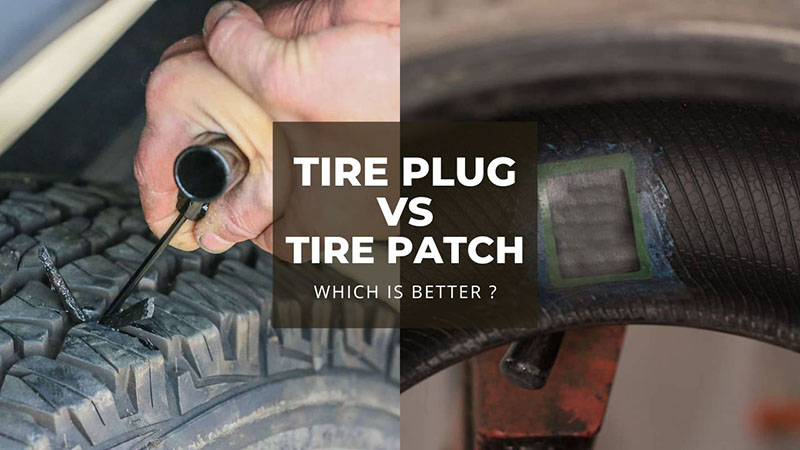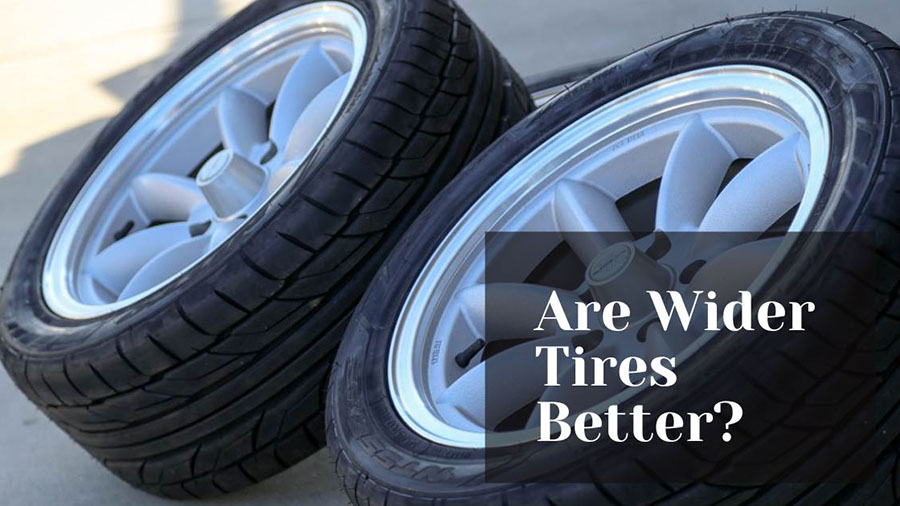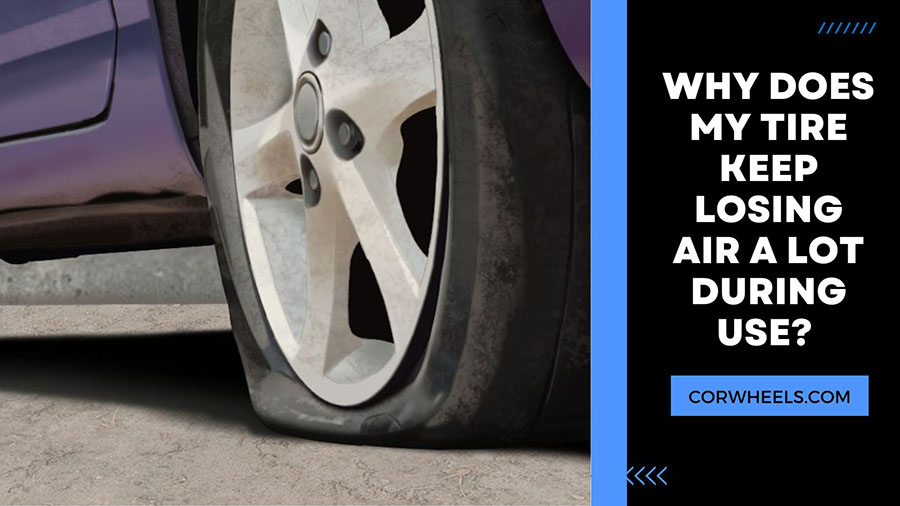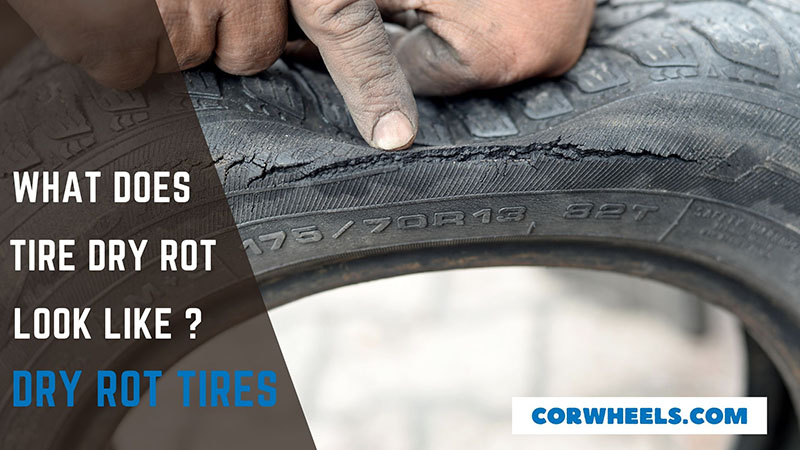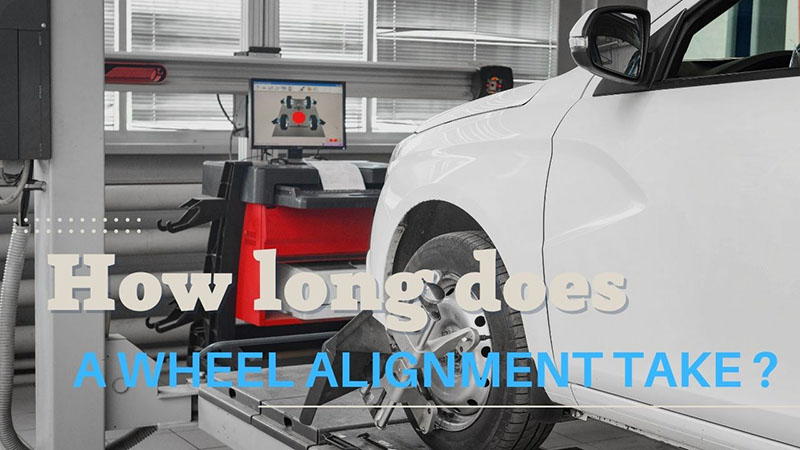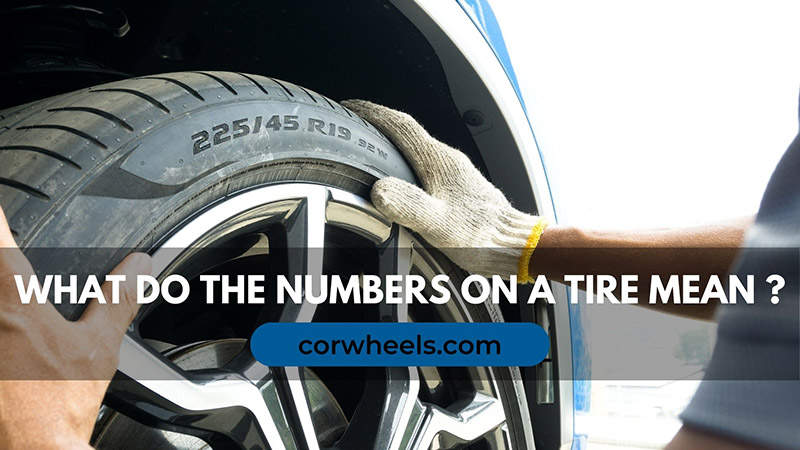What if you have a flat tire on the road? Although the panic takes over your mind, try to put it aside to find a way to fix your tire as quickly as possible.
The problem is that there is more than one way to solve your situation, such as a patch vs plug tire, but which one is right for you? Scroll down to learn.
In this article:
What Is A Tire Plug?
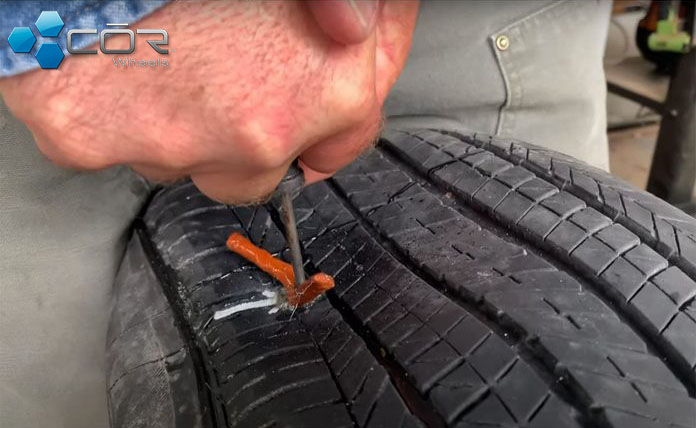
A tire plug is an expandable cylindrical rubber piece that is inserted in a punctured hole and then adjusted until it fits in snuggly to prevent air from escaping.
What Does A Tire Plug Look Like?
The plug is about the size of a cylindrical pencil eraser. You can find many variations on the market, but most are made of rubber or foam. Regarding the inner construction, consider solid or hollow options, but both are usually coated with a sealant for optimal adhesion.
Investing in a plugging kit gives you additional insertion and reamer tools. The former assists in pushing the plug into the puncture, while the latter comes first to clean and roughen the hole.
How Does A Tire Plug Work?
As noted above, the operational principle of plugging is based on replacing an object in place of the nail or blunt object that causes the puncture. Refer to the process below for these details:
- The driver or mechanic identifies the leak through visual inspection or using a soapy water spray.
- Remove debris from the hole and roughen the edges to increase adhesion.
- Insert the plug into the hole but then pull it out a bit to expose both ends.
- Cut these ends until the rest of the plug is flush with the tire surface.
- Leave the unit in place and inflate the tire.
What Is Tire Patch?
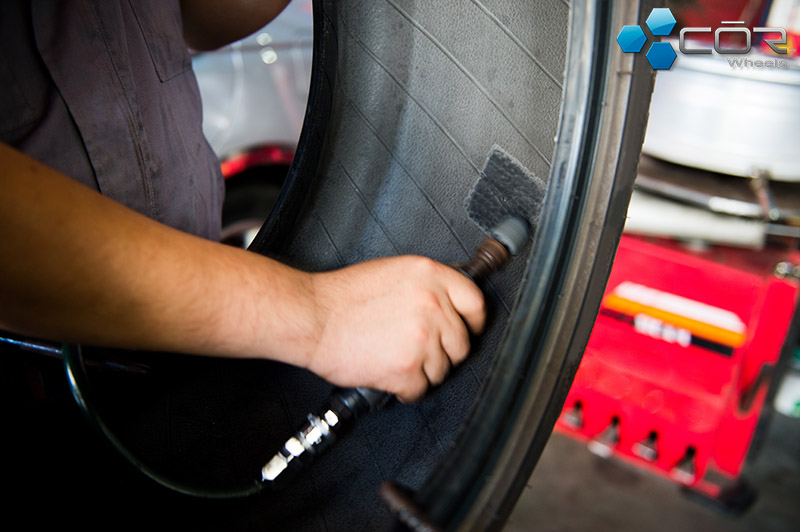
A tire patch is a circular rubber piece with an adhesive side to stick to the tire’s inner side over a puncture, and then treated with UV light or heat to keep air from leaking. This is a cheap yet temporary fix, and there is also a patch-plug method for stronger effects.
What Does A Patched Tire Look Like?
Most patches are made of rubber. Depending on the hole shape, you can purchase a suitable one or customize one by cutting the current patch. The market offers you two options: tubeless and inner tube patches. As their name suggests, each is designed to serve a specific type of tire.
How Does A Tire Patch Work?
Instead of reaching the hole inside like a plug, a patch sits on the inner surface. Here’s how it works:
- Disassemble the tire and identify the puncture or air leak
- Remove debris from the hole and surrounding areas.
- Apply vulcanizing cement and then lay the patch on the inside of the tire so that it covers the entire puncture
- Cover the whole patch with rubber sealant and let it dry
- Reinstall and inflate again.
Patch vs. Plug Tire: Which Is Better Repair?
Plugging is an easier and quicker method but only works for screw, nail, or other small, straight holes. Patching is a harder yet stronger method, applied for larger, angled, or near-the-sidewall holes. But both can’t treat a hole on the sidewall; you have to replace the tire then.
Hole Coverage
Most plugs can only handle small punctures with a diameter of 1/4 inch (about 6 mm) or less. It also promises good results only for damaged areas on the tread, not the sidewalls.
In comparison, patches rescue wide holes up to 1/2 inch (about 12 mm) in diameter. One caveat is that it also does not work at the edge of the sidewall. The patch should be about 1/2 inch from the tread at the point where the steel belt appears.
Ease Of Use
From the two brief installation procedures mentioned above, it’s easy to confirm that plugging costs you less effort. You have saved a considerable amount of time not disassembling the wheel.
All you need to do is rotate it to a favorable position and proceed with further steps. The rest can be done in 20-30 minutes if you do not spot any other problems.
Meanwhile, patching requires careful preparation before the main job – detaching wheels and tires. These are not friendly to the inexperienced.
It is also not feasible when the driver has a flat tire. The detailed process involves specialized repair tools that are not usually available in the trunk of your car.
Cost
A plug’s average price is between $10 and $20. Meanwhile, a patch may cost you around $20-50. Additional charges include higher labor fees over longer service times and more material costs. However, patching is a good investment if you consider the money spent over usage time.
Durability
What matters here is not how long they will last but how long can you drive on a patched or plugged tire.
From this perspective, patching can last for the rest of the tire life if installed properly, while plugging can only let you drive for 8-10 miles (never exceeding 80 miles). The plug may fall off after a while since it loses connection with the rubber structure inside the puncture.
Safety
Again, the plug spares too much room for things to go wrong. From the beginning, the reaming tool’s involvement in the workflow was fraught with risks.
You can damage the polyester shell or, more seriously, the steel belt with careless handling. This reduces tire life and severely affects its performance.
Essentially, a plug acts as a bandage rather than a cure-all. The hole is still there and may grow larger over time. In addition, the tire can no longer maintain optimal stress tolerance and speed ratings.
It’s not the optimal choice if you want to drive off-road or accelerate. Aggressive manners may result in air leakage again, and your wheels are then prone to a blowout right on the road.
So When To Use Tire Patch And Plug?
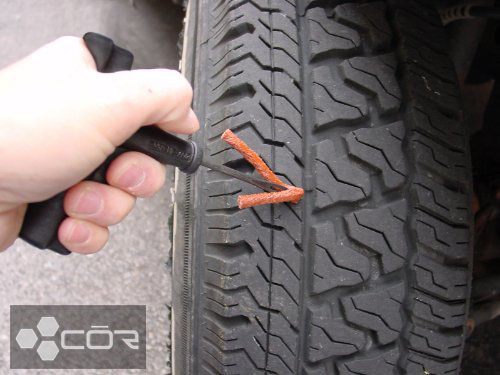
If you have a small hole caused by a nail or screw far from the side wall, go for a plug. However, NEVER use a plug if:
- The working spot has a large area or an irregular shape
- You’ve been driving on flat tires for more than a mile. The sidewall may be damaged
- You may get bubbles or bulges on the rubber surface
- You intend to perform other repairs soon
- You usually travel on rough/uneven roads.
Nothing is better than patches if you have a larger hole (but no larger than 1/2 inch). Anyway, consider including the following conditions:
- The spot is not at a strange angle
- Sidewalls and rubber surfaces are still in good condition
FAQs
How Long Can I Drive On A Plugged Tire?
Do not drive far from 8 miles on a plugged tire, as this situation puts you and other passengers in danger.
Why Don’t They Plug Tires Anymore?
As plugging consists of too many risks, such as poor stress handling, reduced performance at high speed or in racing, etc
How Many Times Can You Plug A Tire?
Most service providers only recommend plugging a tire twice, but it’s best to keep it just once.
Conclusion
Tire patch vs plug work best when they are applied in the right case.
Remember that you should never use both for holes only an inch away from the sidewall. It’s time to consider a new tire because even the most experienced mechanic can’t save the situation.
If you are unsure of your choice, do not hesitate to drive to an auto center for expert advice.

